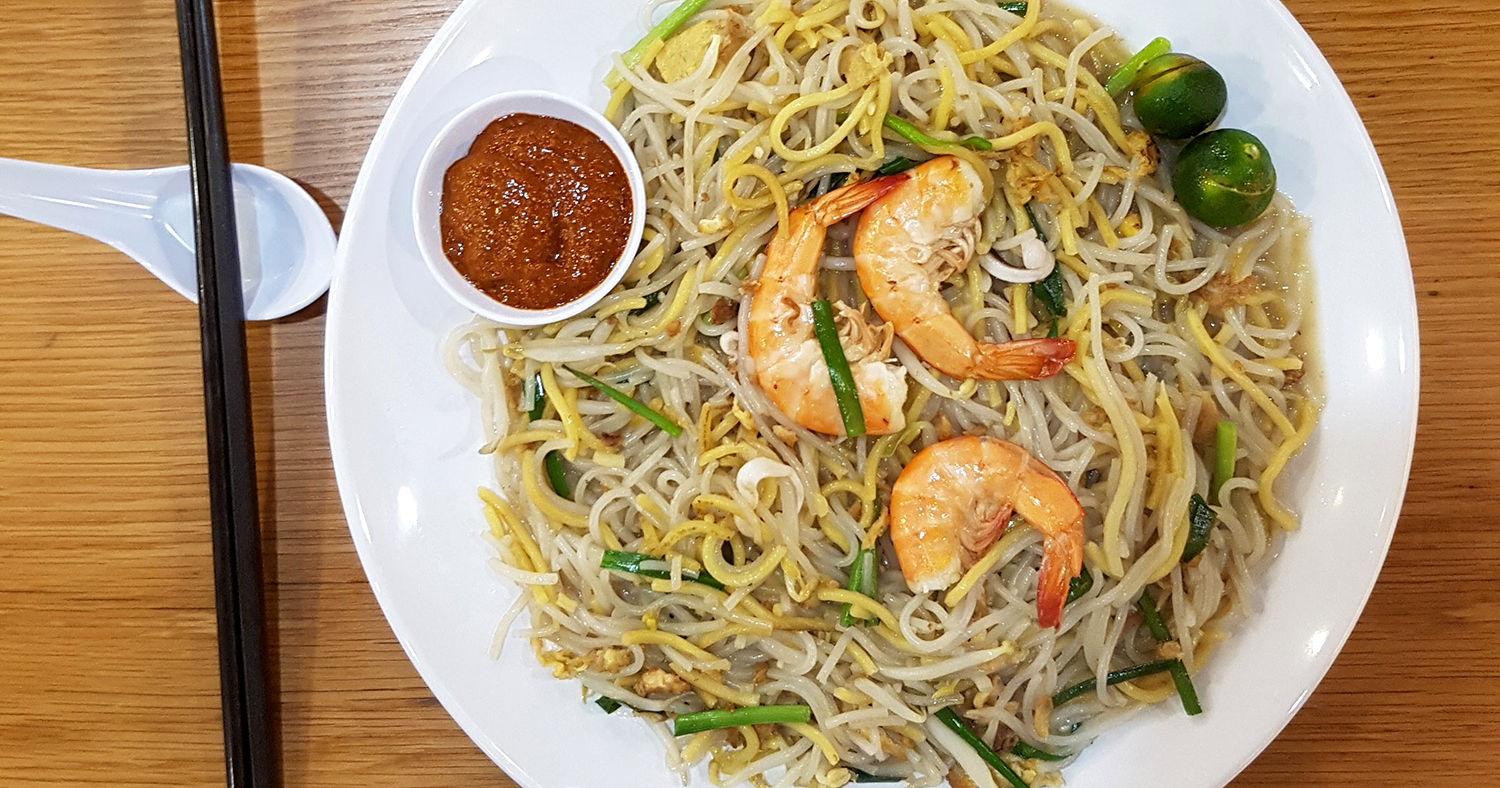Hokkien Mee in Singapore wasn't always called "Hokkien Mee".
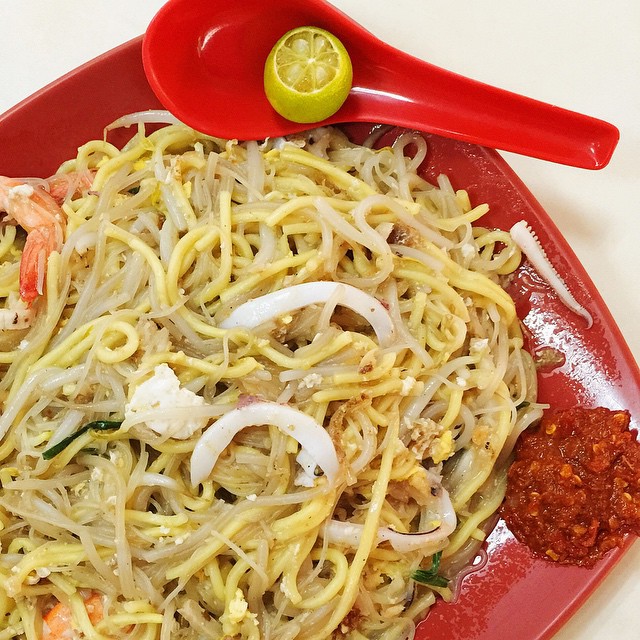 Via Flickr user Soon Koon.
Via Flickr user Soon Koon.
Rochor Mee made from leftover pork
According to one Vincent Gabriel who recorded an oral interview (Accession Number 002909) with the National Archives in 2005, Hokkien Mee was originally called "Rochor Mee" because it was invented at Rochor Market:
"In the early 60s, there was this big market at Rochor... just before Bugis Junction. And this market specialised in selling pork."
"At the end of the day, there were leftover pork, so the hawkers there were quite clever, they cut the pork to small strips and cooked it together with the thick sauce made of prawn shells. After they put (the pork strips) in the sauce, they fried the noodles then they added the sauce. They invented a dish known as Rochor Mee. Later Rochor Mee graduated to become Hokkien Mee."
Hokkien seaman sold Rochor Mee
The Rochor Mee then was very rich due to the amount of lard:
"At the end of the day, [the Rochor market sellers] will have a lot of pork lard that they had no use for, so these hawkers will cut it up one by one, made into what you call today bacon rinds or bacon bits, and then the oil they use to fry the [Rochor Mee]. It is so rich because it is fried in lard."
Gabriel's account is backed by Infopedia, which postulated that the dish was first sold by a Hokkien ex-seaman at his Rochor market stall.
This origins story is made more interesting by the fact that the label "Hokkien Mee" was used for another dish:
"The real Hokkien Mee actually, is a soup dish, where you have big prawns... apart from using the big prawns and the prawn soup, and the yellow noodle, the other thing was the ground chilli. The chilli was (ground) into a powder and then put on top of the noodles so it would have an unusual kick."
Gabriel's account of real Hokkien mee sounds like what we know today as prawn noodle soup.
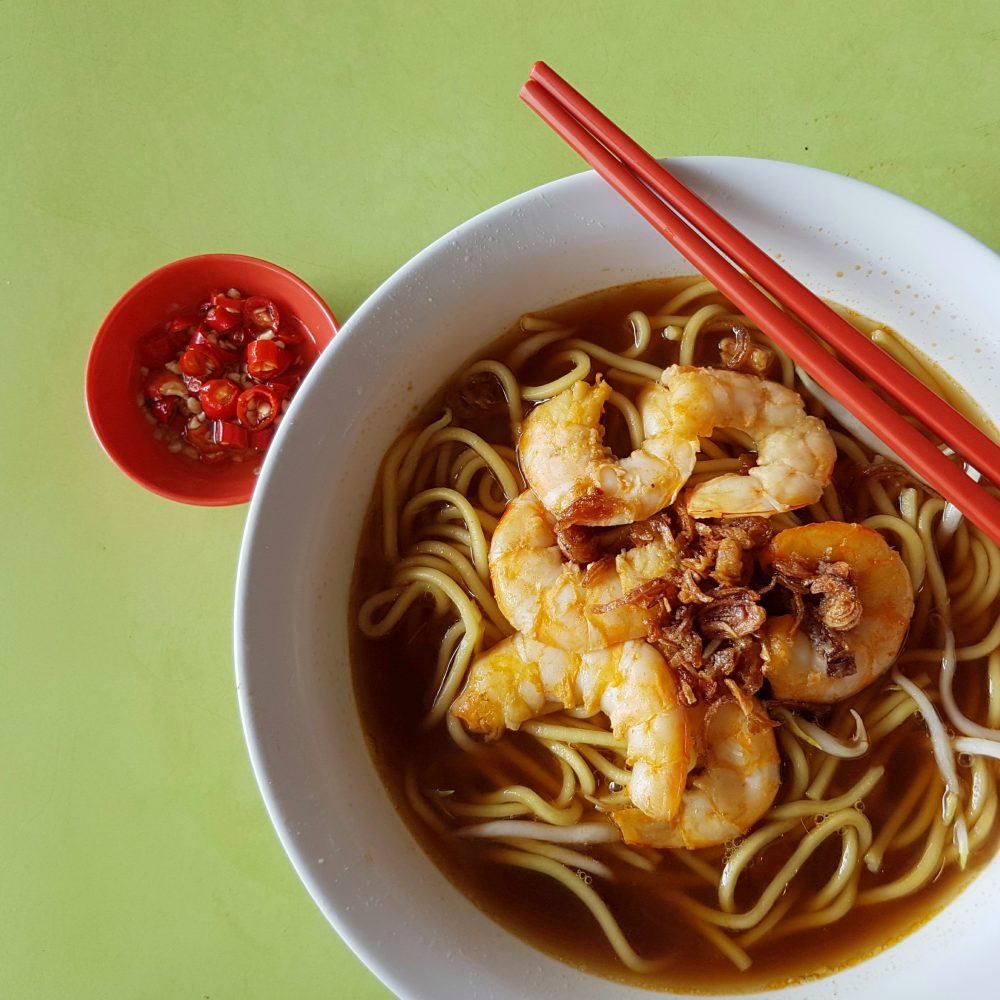 The original "Hokkien Mee"? Image by Joshua Lee.
The original "Hokkien Mee"? Image by Joshua Lee.
Fishballs were made by hand
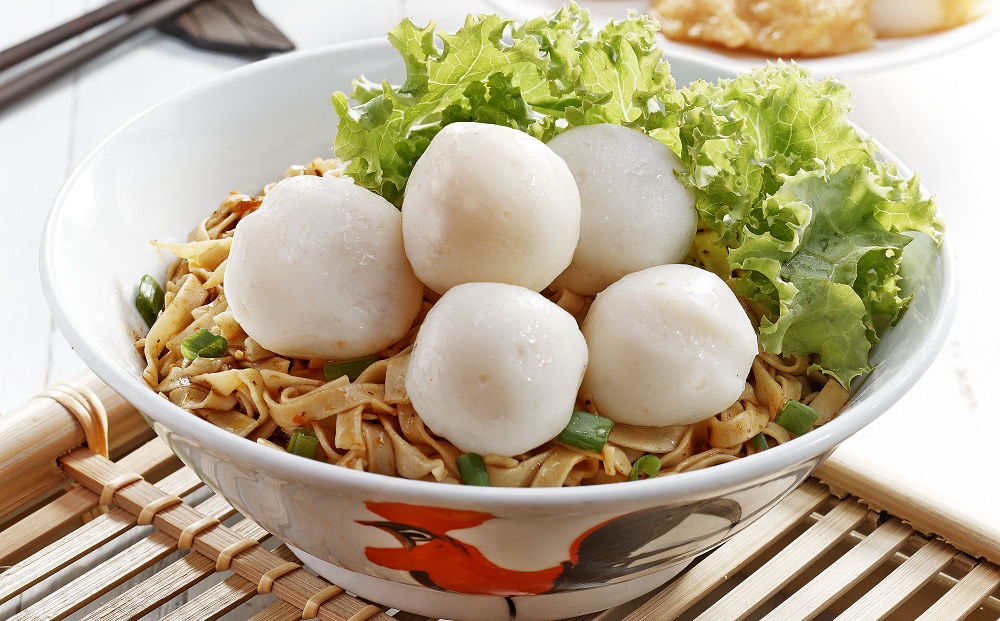 Fishball noodles. Image via Encik Tan.
Fishball noodles. Image via Encik Tan.
Gabriel's interview also gave an insight into other aspects of food back in the 1960s, such as fishball noodles, which used soup boiled from fish stock -- essentially the stock used in today's sliced fish soup:
"Take the fishball noodles, the stock will be prepared by boiling fish bones overnight until they produce a milky, light soup which was very fishy in taste."
He also said that fishballs were rolled by hand to keep their shape:
"Then the fishball was made in front of you. I think they used this ikan parang (wolf herring), then mixed with starch, and then used a small spoon, and rolled it with the hand and then dropped into the water. And so that causes it to keep the roundness."
"When required for the soup, they just drop it into the hot soup and at once it hardens. Then the noodles were dipped in and taken out and then served. And then cut a few vegetables and just throw it in and chai por (preserved vegetables) and that was your meal."
Satay made from chicken heart and skin
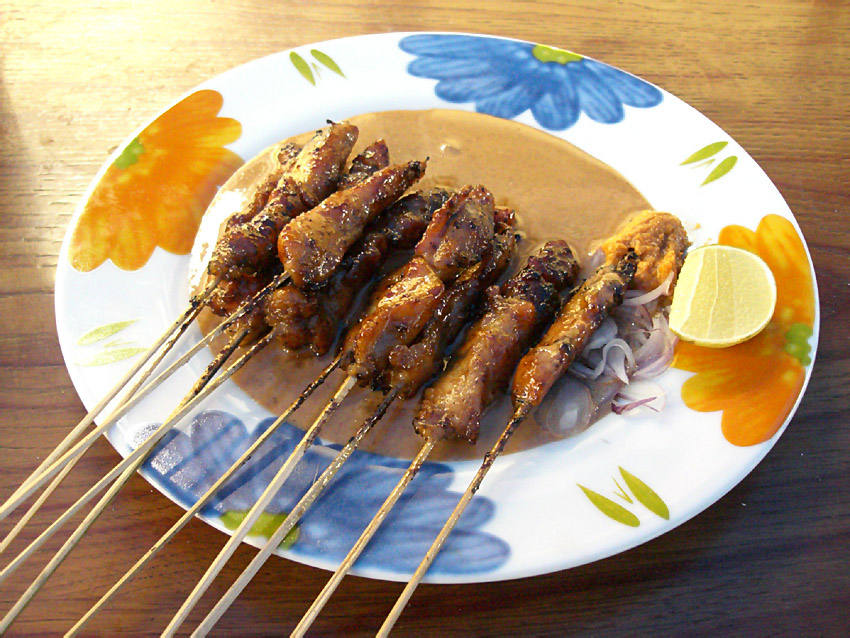 Satay. Via Wikimedia.
Satay. Via Wikimedia.
According to Gabriel, competition between satay businesses, especially as places like the Satay Club was very stiff:
"Very competitive, and they tried to give you the best. [Supposed] you ordered 70 sticks of satay, [but] you only managed to consume 66 sticks, so left four. They [would] take back the other four and give you a discount."
"You can ask for more onion, more cucumber because very few people took cucumber in the night because they thought it was cooling, so the hawkers were just glad to give you the cucumber and the onions."
The variety of satay was mind-boggling:
"The food was prepared in front of you, as the man grilled the satay, they added the oil, so the satay was always moist. and they did it slowly. Satay takes about 15, at the very least, to as long as 25 minutes to prepare."
"Then you had wide choice of satay....Apart from chicken, beef, button, there was also the lung, skin, gizzard, heart satay."
Eat only fried stuff at night
Because of the lack of proper refrigeration, food could not be kept long outside, which was why Gabriel "had to eat at the meal times, and try to eat as early as possible":
"Because that time, there was no refrigeration, and these are portable hawkers, they cannot have a fridge inside. So you can just imagine how the food was."
"So the best bet was, in the evening, to eat only fried things, so that at least you [are] sure they were cooked in front of you, and there was some chance that the bacteria will be killed."
If you would like to find out more about how Singaporeans ate in the past, you can read and listen to the rest of Gabriel's account of food at the National Archives (Accession Number 002909) Disc 5.
You can also see the rest of his interview by searching for "Accession Number 002909" at the Oral History Interviews page.
 #SG200 is not a celebration. It's a commemoration. What's the difference? Click the logo. Maybe these articles might help.
#SG200 is not a celebration. It's a commemoration. What's the difference? Click the logo. Maybe these articles might help.
Top image by Joshua Lee
If you like what you read, follow us on Facebook, Instagram, Twitter and Telegram to get the latest updates.
